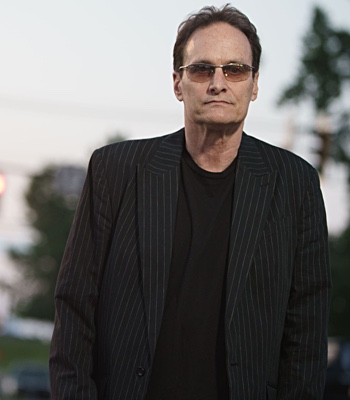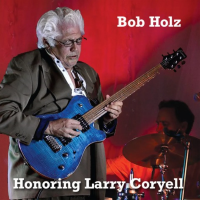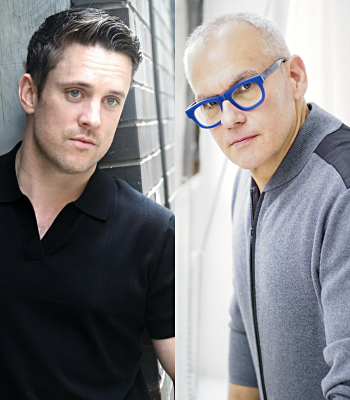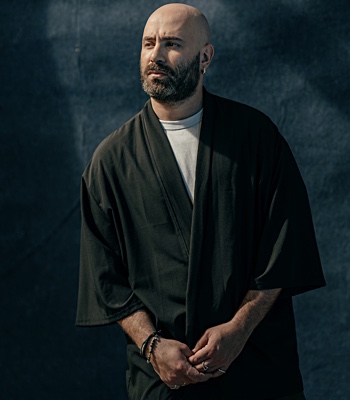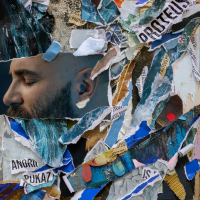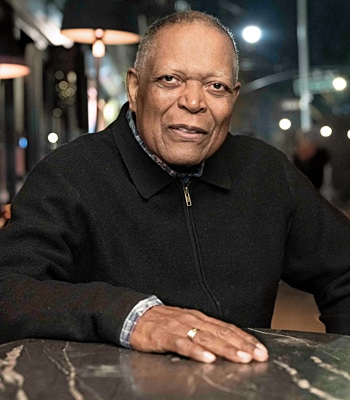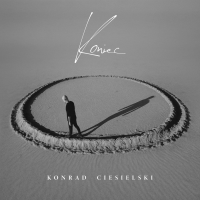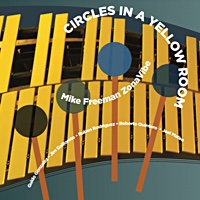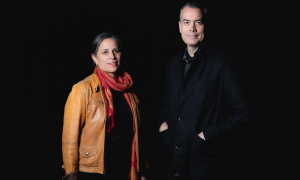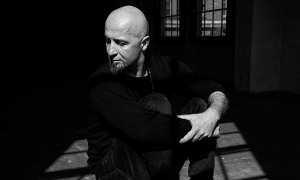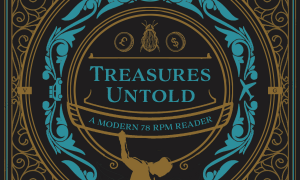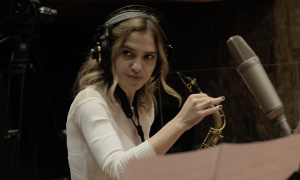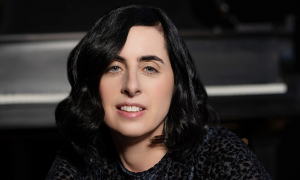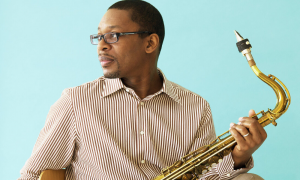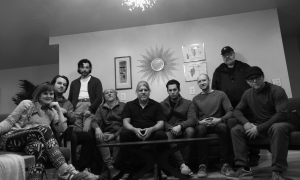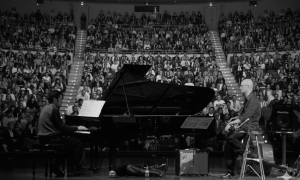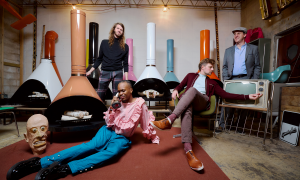
Working with Getz also presented Gary with a range of other challenges. Getz was notoriously acidic and mercurial, and somewhat puzzled by his newfound bossa nova fame. For Gary, Getz required careful management and navigation both on and off stage.
In Part 3 of my four-part interview with Gary on his rise to prominence in the 1960s, the vibraphonist talks about joining Stan Getz, the struggle to fit in, appearing in Get Yourself a College Girl and touring with the band in Canada:
JazzWax: How did you get the job with Stan Getz in 1964?
Gary Burton: Through pianist Lou Levy. Guitarist Jimmy Raney was in Stan's band but was having alcohol problems. Stan was looking for a pianist to replace Jimmy but everyone he wanted wasn't available. Lou said to Stan, “Instead of a guitar, there's this vibes player I heard who plays with four sticks."
JW: Did Getz reach out to you?
GB: Chuck Israels, Stan's bassist at the time, said to Stan, “I know Gary, I'll give him a call." Chuck invited me to sit in with Stan's band at Basin Street East in New York.
JW: How did the first night go?
GB: Not too well. Jimmy Raney had played steadily behind Stan while Stan soloed and I couldn't comp that way. After the set, Stan told me it didn't turn out too well. I knew it had been an experiment but I was still disappointed in how things worked out and disappointed in myself.
JW: That must have been some blow.
GB: It was. It shook me off my game. I knew that I had been awkward and unsettled on the date. But I got over it a week later when Chuck called and said, “We're desperate. We're leaving for Canada and Stan needs you." I thought, “What the heck, it's just a gig."
JW: Did the group rehearse?
GB: Yes. I went up to Stan's house north of New York. Unlike George Shearing, who had this huge library of charts, Stan had no music. He had records. He'd put on a record and say, “Let's play this tune." Some were bossa novas he had recently recorded.
JW: What material did the group pull together for the tour?
GB: We chose six songs from the records. This was the beginning of January 1964. I had a few of Stan's records from the 1950s and his hit record with Charlie Byrd, Jazz Samba. That was about it.
JW: Did the group play many of Getz's bossa nova tunes in Canada?
GB: On the road, Stan minimized the bossa nova material. We did only two of them, usually toward the end of each set. The rest of the playlist was made up of regular jazz tunes, like Here's That Rainy Day, What Is This Thing Called Love.
JW: Where was the group's first stop?
GB: Montreal. For the first week, Stan stayed drunk. The club was pretty quiet. There wasn't much traffic. But in Toronto, the crowds were bigger, and Stan started to take the tour more seriously. Meanwhile, I was learning how to comp behind him. He was super particular.
JW: How so?
GB: Stan was used to the best when it came to accompanists. He wasn't used to hearing the vibes behind him, and I was kind of clumsy at knowing when to jump in, what to play behind him, and so on. He'd get frustrated at least two or three times a night and ask me to lay out.
JW: Did things ever work out?
GB: By end of three weeks in Canada it had come together. We had a sound as a group. Stan invited me to do more and more concerts, and I stayed on for three years.
JW: In 1964, you appeared in Get Yourself a College Girl, a teen movie that featured Astrud Gilberto singing The Girl From Ipanema.
GB: in those days, if you had a hit, the movie studio that owned the label worked you into a film. In Stan's group, we actually did two of those films. The first was a made-for-TV movie called The Hanged Man, a murder mystery set in New Orleans.
JW: How were you featured?
BG: It was a nightclub scene at Mardi Gras and we were playing on the stage, with Astrud Gilberto singing. After we shot that one, we were called to appear in College Girl. It was really just an excuse to showcase MGM/Verve artists. That's why Jimmy Smith was in College Girl, too. We were on the Verve label. That's how the movie and record business worked then.
JW: Your scene in College Girl takes place at a ski resort--yet everyone in the audience is dressed for summer.
GB: [Laughs] Yes. We did that on an L.A. set that had been used previously for an Elvis movie. There was a snow machine behind the fake window and fake scenery. There was a guy up on a catwalk letting down the flakes. They brought us sweaters to wear. Fortunately, the sound stage was air-conditioned [laughs].
JW: In the scene, the performance on stage is clearly dubbed.
GB: [Laughs] In most movies back then, they didn't want mikes showing in the shots. So they had you first record the music in a studio. They'd tell you, “Don't play too complicated because we want you to match what you played as closely as possible on camera." It was easy for pop group to do this with a set arrangement. For jazz, it's a little tougher.
JW: How was it to film the scene?
GB: I was playing the vibes while listening to our earlier recording coming through the speakers. I was trying to match what I had done as best as possible so it looked authentic. We shot a few takes. Stan knew it was just for promotion so he didn't care. It was kind of exciting to be in a movie. The playing wasn't particularly inspiring or exciting.
JW: In May you recorded Getz Au Go Go, recorded live at New York's Café Au Go Go.
GB: I had been in the band about three months at that point. Astrud had just joined the group on the road. Chuck Israels hadn't joined Bill Evans yet and joined us during the run.
JW: How did Astrud Gilberto fare on the road?
GB: She didn't know many of the songs we played. She knew two, so she'd come out at the end to sing them. Astrud was the wife of Joao Gilberto and had dreamed about becoming a singer. She had been given a shot on The Girl From Ipanema in 1963 and it worked out well. At the time of the recording, the Verve executives wanted to use authentic Brazilian musicians. But at some point they realized they needed at least one song with English words. So someone had the idea to have Astrud sing. Everybody takes credit for that one.
Tomorrow, Gary talks about Stan Getz, Astrud Gilberto and the making of Duster.
JazzWax tracks: Gary's albums with Stan Getz include Nobody Else But Me, Getz Au Go Go, A Song After Sundown and Paris Concert.
Nobody Else But Me (March 1964) and Getz Au Go Go (May 1964) remain smart period pieces--seductive jazz recorded months before rock's British Invasion began pushing jazz aside. Just the sound of Getz's spirited, upbeat tenor sax against Gary's intellectual vibes brings the early 1960s back with a rush.
JazzWax clip: The YouTube clips of Stan Getz, Astrud Gilberto and Gary Burton in Get Yourself a College Girl are all out of sync. Instead, here's the film's trailer...
This story appears courtesy of JazzWax by Marc Myers.
Copyright © 2025. All rights reserved.



